NURS 6521 Asthma and Stepwise Management Assignment Presentation Example
NURS 6521 Asthma and Stepwise Management Assignment Presentation
 NURS 6521 Asthma and Stepwise Management Presentation Assignment Brief
NURS 6521 Asthma and Stepwise Management Presentation Assignment Brief
Course: NURS 6521 – Advanced Pharmacology
Assignment Title: NURS 6521 Asthma and Stepwise Management Assignment Presentation
Assignment Instructions Overview
This assignment focuses on the stepwise management of asthma, a chronic respiratory disorder affecting individuals of all ages. As an advanced practice nurse, your role in managing asthma involves recognizing symptoms, understanding triggers, and recommending appropriate treatment options. You will create a 5- to 6-slide PowerPoint presentation for a staff development meeting, detailing different approaches for implementing the stepwise approach for asthma treatment.
Understanding Assignment Objectives
The primary objectives of this assignment are to enhance your understanding of the pharmacological treatments available for asthma, including both long-term control and quick relief options, and to explore how the stepwise approach can be utilized to optimize patient care. You will also learn to effectively communicate these concepts to other healthcare providers, improving overall asthma management within your practice.
The Student’s Role
As a student, you are expected to:
- Reflect on and review the various medications used to treat asthma, considering their impact on both adult and pediatric patients.
- Apply the stepwise approach to a hypothetical patient scenario, demonstrating how this method assists in achieving and maintaining asthma control.
- Develop a concise, informative presentation that educates your colleagues on these treatment strategies, highlighting the importance of tailored patient care and the role of stepwise management in clinical practice.
Competencies Measured
This assignment will assess the following competencies:
- Pharmacological Knowledge: Understanding the different categories of asthma medications and their specific roles in long-term control and quick relief.
- Clinical Decision-Making: Applying the stepwise approach to manage asthma effectively, adjusting treatment plans based on patient response.
- Patient Education and Communication: Developing skills to educate patients and other healthcare providers about asthma management strategies.
- Critical Thinking: Analyzing patient cases to determine the most appropriate treatment steps and recognizing when to escalate or de-escalate therapy.
- Professional Presentation: Creating and delivering a professional PowerPoint presentation that clearly conveys complex medical information in an understandable manner.
You Can Also Check Other Related Assessments for the NURS 6521 – Advanced Pharmacology Course:
NURS 6521 Discussion Pharmacokinetics and Pharmacodynamics Assignment Example
NURS 6521 Ethical and Legal Implications of Prescribing Drugs Assignment Example
NURS 6521 Pharmacotherapy for Cardiovascular Disorders Assignment Example
NURS 6521 Pharmacotherapy for Gastrointestinal and Hepatobiliary Disorders Assignment Example
NURS 6521 Diabetes and Drug Treatments Discussion Paper Assignment Example
NURS 6521 Decision Tree for Neurological and Musculoskeletal Disorders Assignment Example
NURS 6521 Decision Making When Treating Psychological Disorders Discussion Assignment Example
NURS 6521 Off-Label Drug Use in Pediatrics Assignment Example
NURS 6521 Asthma and Stepwise Management Assignment Presentation Example
Slide 1: Introduction
Asthma Overview:
- Asthma is a chronic inflammatory disorder of the airways that results in episodes of wheezing, breathlessness, chest tightness, and coughing, particularly at night or early in the morning (Gibson, 2019).
- It affects both children and adults, with a significant global health impact.
- Recognizing symptoms and triggers is crucial for effective management.
- Proper treatment can prevent asthma attacks and improve quality of life (Walsh, 2019).
Slide 2: Long-Term Control Medications
Purpose:
- Long-term control medications are designed to be taken daily to achieve and maintain control of persistent asthma.
Common Medications:
- Inhaled Corticosteroids (ICS): Flovent (fluticasone), QVAR (beclomethasone), Pulmicort (budesonide). These medications reduce inflammation and help prevent asthma attacks (Bonewit-West, Hunt, & Applegate, 2015).
- Long-Acting Beta Agonists (LABAs): Advair (fluticasone/salmeterol), Symbicort (budesonide/formoterol). LABAs are used in combination with ICS for better control (Bernstein & Mansfield, 2019).
- Leukotriene Modifiers: Singulair (montelukast) helps prevent airway inflammation and bronchoconstriction.
- Immunomodulators: Omalizumab (Xolair) is used for severe asthma that is not controlled with ICS and LABAs.
Impact on Patients:
- These medications help prevent symptoms and exacerbations, improving overall asthma control and quality of life (Falk, Hughes, & Rodgers, 2016).
- Potential side effects include oral candidiasis, sore throat, and potential growth reduction in children from ICS (Walsh, 2019).
Slide 3: Quick Relief Medications
Purpose:
- Quick relief medications are used to provide immediate relief from acute asthma symptoms and attacks.
Common Medications:
- Short-Acting Beta Agonists (SABAs): Albuterol (Proventil, Ventolin), Levalbuterol (Xopenex). These bronchodilators relax the muscles around the airways (Gibson, 2019).
- Anticholinergics: Ipratropium (Atrovent) can be used for quick relief in combination with SABAs.
- Systemic Corticosteroids: Prednisone is used for severe exacerbations to reduce inflammation.
Impact on Patients:
- These medications provide fast relief of bronchoconstriction and acute symptoms, allowing patients to breathe more easily (Craig, 2014).
- Side effects can include increased heart rate, anxiety, dizziness (from SABAs), and potential overuse leading to severe attacks (Walsh, 2019).
Slide 4: The Stepwise Approach Explained
Step-Up Therapy:
- Begin with low-dose treatment; increase gradually if asthma control is not achieved.
- For example, if a patient on low-dose ICS is not well-controlled, the dosage can be increased or a LABA can be added (Bernstein & Mansfield, 2019).
Step-Down Therapy:
- Start with higher doses; reduce gradually as asthma control improves.
- This approach minimizes medication exposure and side effects while maintaining control.
Application:
- Tailor treatment based on individual patient response and control levels.
- Adjustments are made in a structured manner to optimize asthma management (Craig, 2014).
Slide 5: Benefits of Stepwise Management
For Health Care Providers:
- Provides a clear, structured approach to adjusting medications.
- Complements clinical decision-making and ensures that each patient’s treatment is optimized based on their specific needs (Falk, Hughes, & Rodgers, 2016).
For Patients:
- Improves overall asthma control and quality of life.
- Simplifies medication regimens, making it easier for patients to adhere to their treatment plans (Bonewit-West, Hunt, & Applegate, 2015).
- Reduces the risk of severe exacerbations and hospitalizations (Gibson, 2019).
Slide 6: Conclusion
Summary:
- Asthma management requires a combination of long-term control and quick relief medications.
- The stepwise approach allows for flexible, patient-centered care.
- Continuous monitoring and adjustment of therapy are essential for optimal asthma control (Craig, 2014).
Final Thought:
- Implementing the stepwise approach in clinical practice enhances disease control and patient outcomes, supporting both healthcare providers and patients in managing asthma effectively (Bernstein & Mansfield, 2019).
References
Bernstein, J. A., & Mansfield, L. (2019). Step-up and step-down treatments for optimal asthma control in children and adolescents. Journal of Asthma, 56(7), 758-770.
Bonewit-West, K., Hunt, S., & Applegate, E. (2015). Today’s Medical Assistant: Clinical & Administrative Procedures. London, UK: Elsevier Saunders.
Craig, T. J. (2014). Physician implementation of asthma management guidelines and recommendations: 2 case studies. Journal of the American Osteopathic Association, 114(11), eS4-eS15.
Falk, N. P., Hughes, S. W., & Rodgers, B. C. (2016). Medications for chronic asthma. American Family Physician, 94(6), 454-462.
Gibson, P. (2019). Monitoring Asthma. Boca Raton, FL: Taylor & Francis.
Walsh, B. K. (2019). Neonatal and Pediatric Respiratory Care. St. Louis, MO: Elsevier.
Detailed Assessment Instructions for the NURS 6521 Asthma and Stepwise Management Assignment Presentation
Assignment: Asthma and Stepwise Management
Asthma is a respiratory disorder that affects children and adults. Advanced practice nurses often provide treatment to patients with these disorders. Sometimes patients require immediate treatment, making it essential that you recognize and distinguish minor asthma symptoms from serious, life-threatening ones. Since symptoms and attacks are often induced by a trigger, advanced practice nurses must also help patients identify their triggers and recommend appropriate management options. Like many other disorders, there are various approaches to treating and managing care for asthmatic patients depending on individual patient factors.
One method that supports the clinical decision making of drug therapy plans for asthmatic patients is the stepwise approach, which you explore in this Assignment.
To Prepare
- Reflect on drugs used to treat asthmatic patients, including long-term control and quick relief treatment options for patients. Think about the impact these drugs might have on patients, including adults and children.
- Consider how you might apply the stepwise approach to address the health needs of a patient in your practice.
- Reflect on how stepwise management assists health care providers and patients in gaining and maintaining control of the disease.
By Day 7 of Week 3
Create a 5- to 6-slide PowerPoint presentation that can be used in a staff development meeting on presenting different approaches for implementing the stepwise approach for asthma treatment. Be sure to address the following:
- Describe long-term control and quick relief treatment options for the asthma patient from your practice as well as the impact these drugs might have on your patient.
- Explain the stepwise approach to asthma treatment and management for your patient.
- Explain how stepwise management assists health care providers and patients in gaining and maintaining control of the disease. Be specific.
Submission and Grading Information
To submit your completed Assignment for review and grading, do the following:
- Please save your Assignment using the naming convention “WK3Assgn+last name+first initial.(extension)” as the name.
- Click the Week 3 Assignment Rubric to review the Grading Criteria for the Assignment.
- Click the Week 3 Assignment You will also be able to “View Rubric” for grading criteria from this area.
- Next, from the Attach File area, click on the Browse My Computer Find the document you saved as “WK3Assgn+last name+first initial.(extension)” and click Open.
- If applicable: From the Plagiarism Tools area, click the checkbox for I agree to submit my paper(s) to the Global Reference Database.
- Click on the Submitbutton to complete your submission.
- NOTE: SafeAssign does not accept files over 10MB in size. Please attempt to keep your files under 10MB.
Submit Your Assignment by Day 7 of Week 3
Get The Best Nursing Paper Writing Service and Unlock Your Academic Success
Are you overwhelmed with complex nursing assignments, tight deadlines, or specific instructions that seem challenging to meet? Look no further – nursingcustomwriting.com is your go-to destination for all your nursing paper writing needs! Our expert nursing essay writers are dedicated to providing you with high-quality, original, and customized nursing papers that guarantee the best grades possible.
Why choose nursingcustomwriting.com?
- Professional Nursing Writers: Our team of professional writers specializes in nursing essay papers, ensuring your assignment is in the hands of experts who understand the writing of nursing topics.
- Affordable Prices: We understand the financial constraints of college students. Our online nursing papers are available at very cheap prices, making our services accessible to all. Whether you need assistance with nursing coursework writing, want to buy a nursing essay online, or are in search of reliable nursing assignment help, we’ve got you covered.
- Customized Nursing Paper Solutions: Whether you need assistance with a complex topic, have a tight deadline, or are seeking a guide on how to write your nursing assignment, we’ve got you covered. Our writers will tailor their approach to meet your specific needs.
- Originality Guaranteed: Say goodbye to plagiarized papers! Our writers will provide you with an outstanding nursing essay paper written from scratch, ensuring it adheres to any topic, deadline, and instructions you provide.
Save your time for what matters most and let nursingcustomwriting.com take care of your essay. Don’t settle for subpar papers or risk submitting plagiarized content. Choose the best nursing paper writing service today!
Unlock your academic success by trusting nursingcustomwriting.com – Your Partner in Excellence.


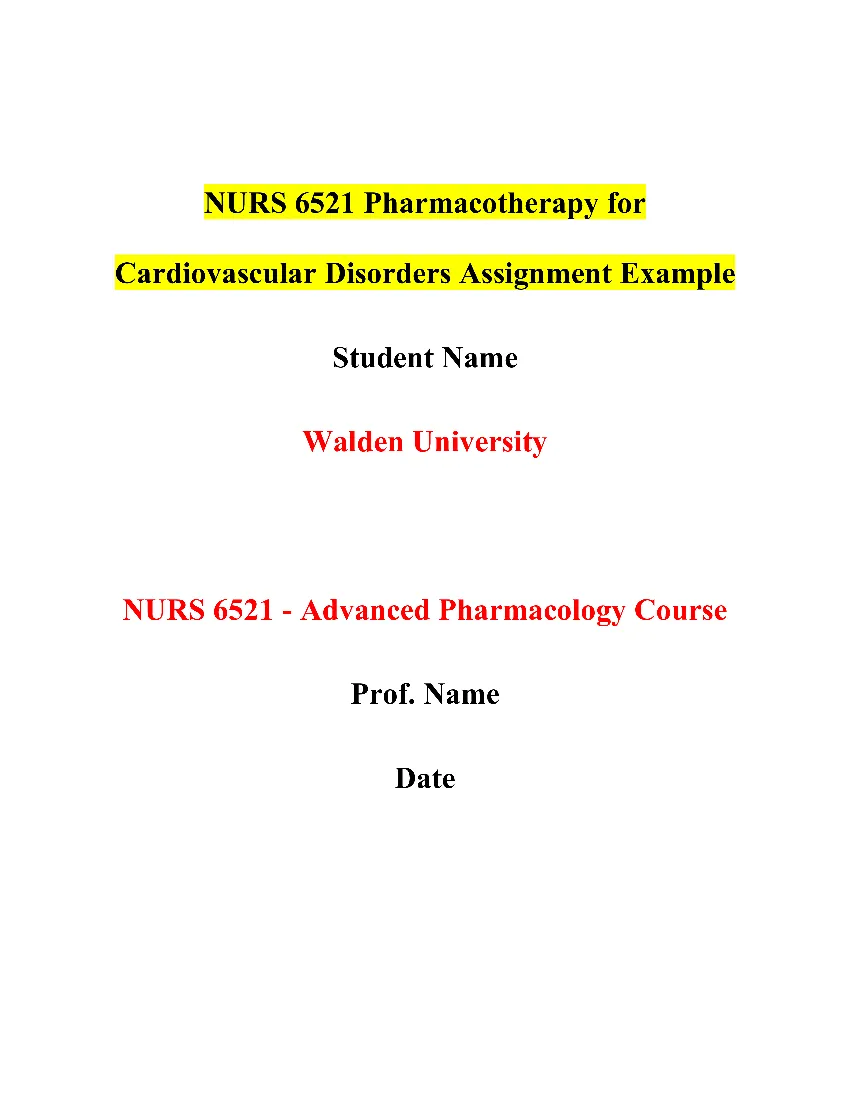 NURS 6521 Pharmacotherapy for Cardiovascular Disorders Assignment
NURS 6521 Pharmacotherapy for Cardiovascular Disorders Assignment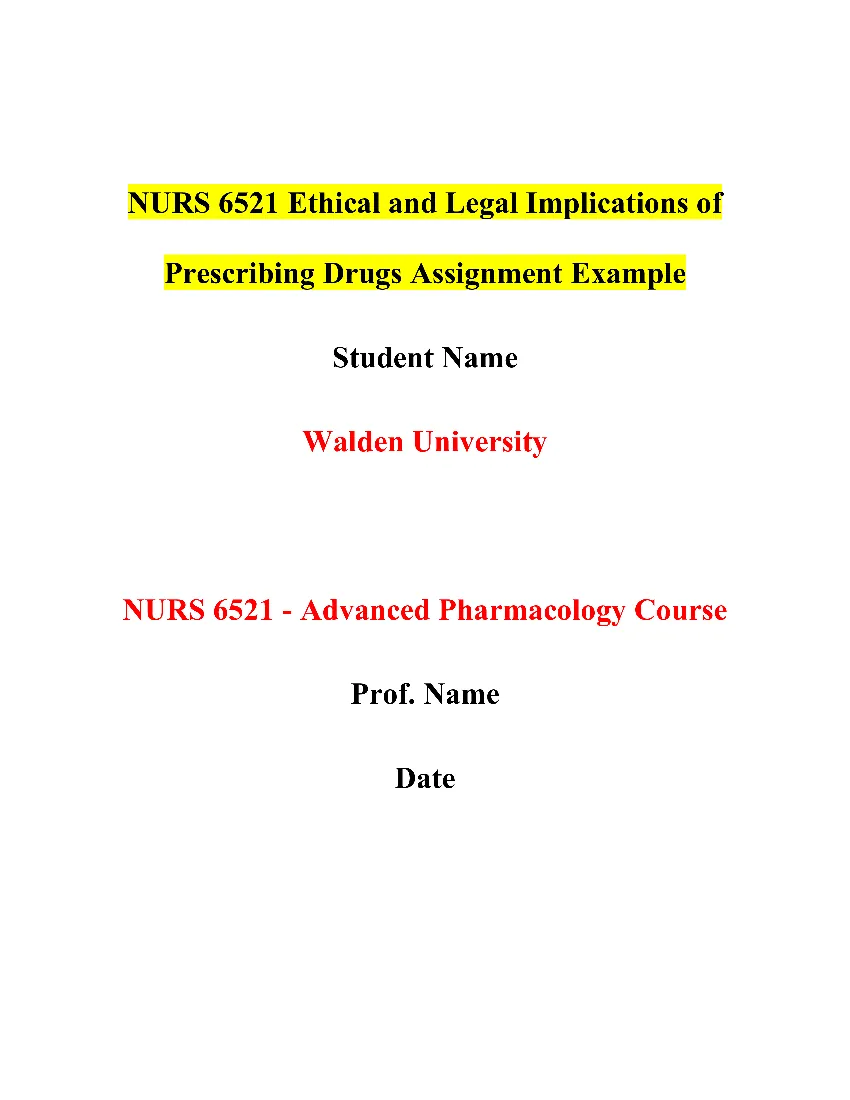 NURS 6521 Ethical and Legal Implications of Prescribing Drugs Assignment
NURS 6521 Ethical and Legal Implications of Prescribing Drugs Assignment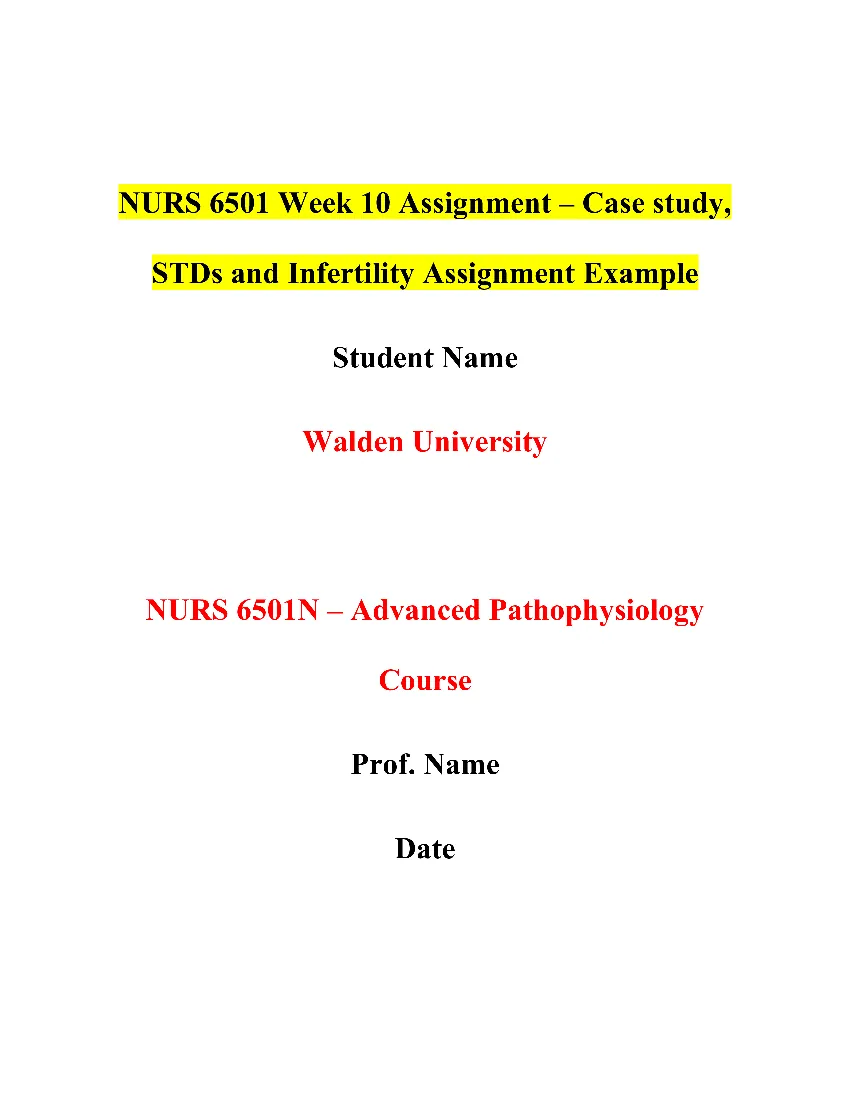 NURS 6501 Week 10 Assignment – Case study, STDs and Infertility Assignment
NURS 6501 Week 10 Assignment – Case study, STDs and Infertility Assignment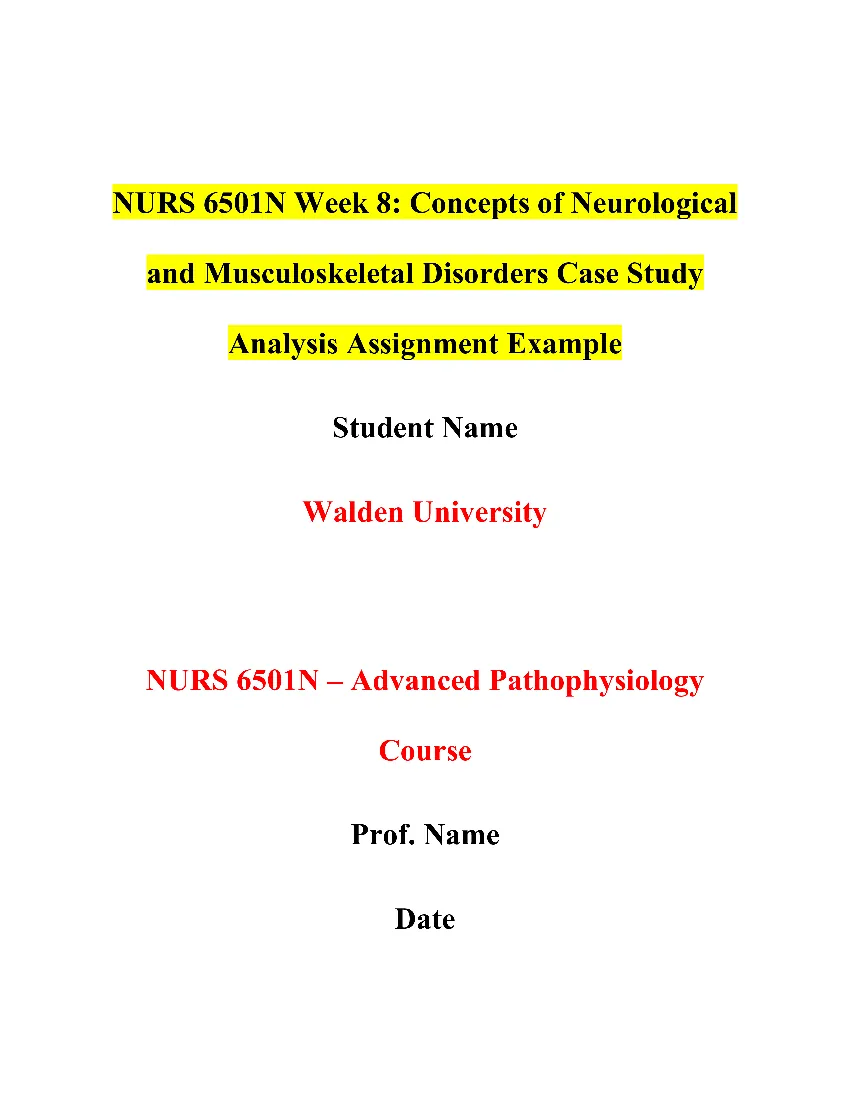 NURS 6501N Week 8: Concepts of Neurological and Musculoskeletal Disorders Case Study Analysis Assignment
NURS 6501N Week 8: Concepts of Neurological and Musculoskeletal Disorders Case Study Analysis Assignment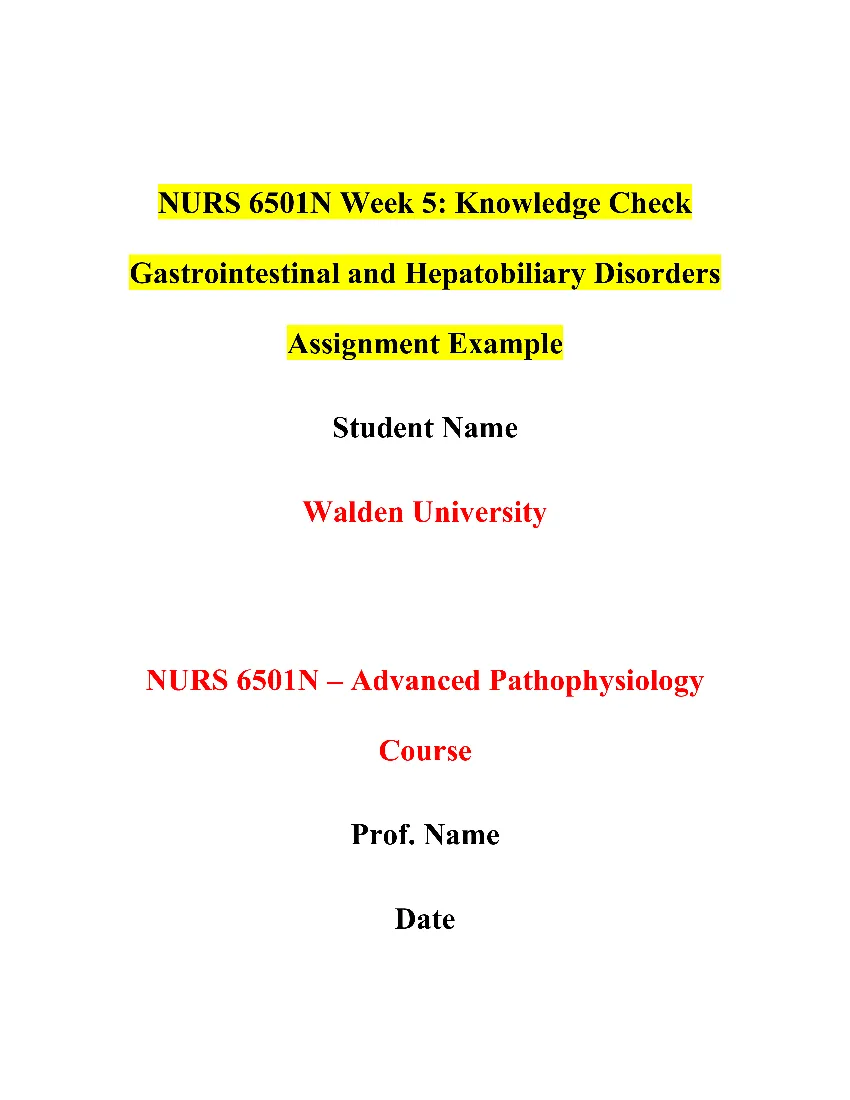 NURS 6501N Week 5: Knowledge Check Gastrointestinal and Hepatobiliary Disorders Assignment
NURS 6501N Week 5: Knowledge Check Gastrointestinal and Hepatobiliary Disorders Assignment NURS 6501N Week 4 Case Study Analysis Assignment
NURS 6501N Week 4 Case Study Analysis Assignment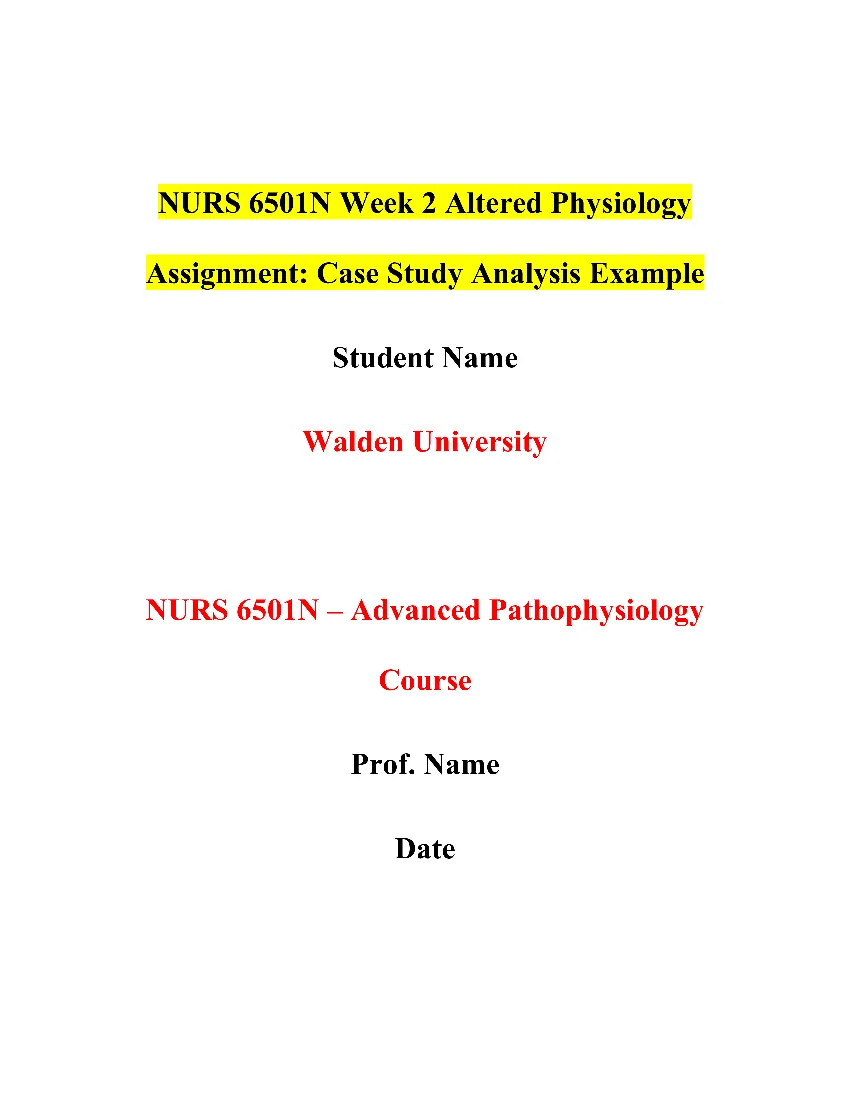 NURS 6501N Week 2 Altered Physiology Assignment: Case Study Analysis
NURS 6501N Week 2 Altered Physiology Assignment: Case Study Analysis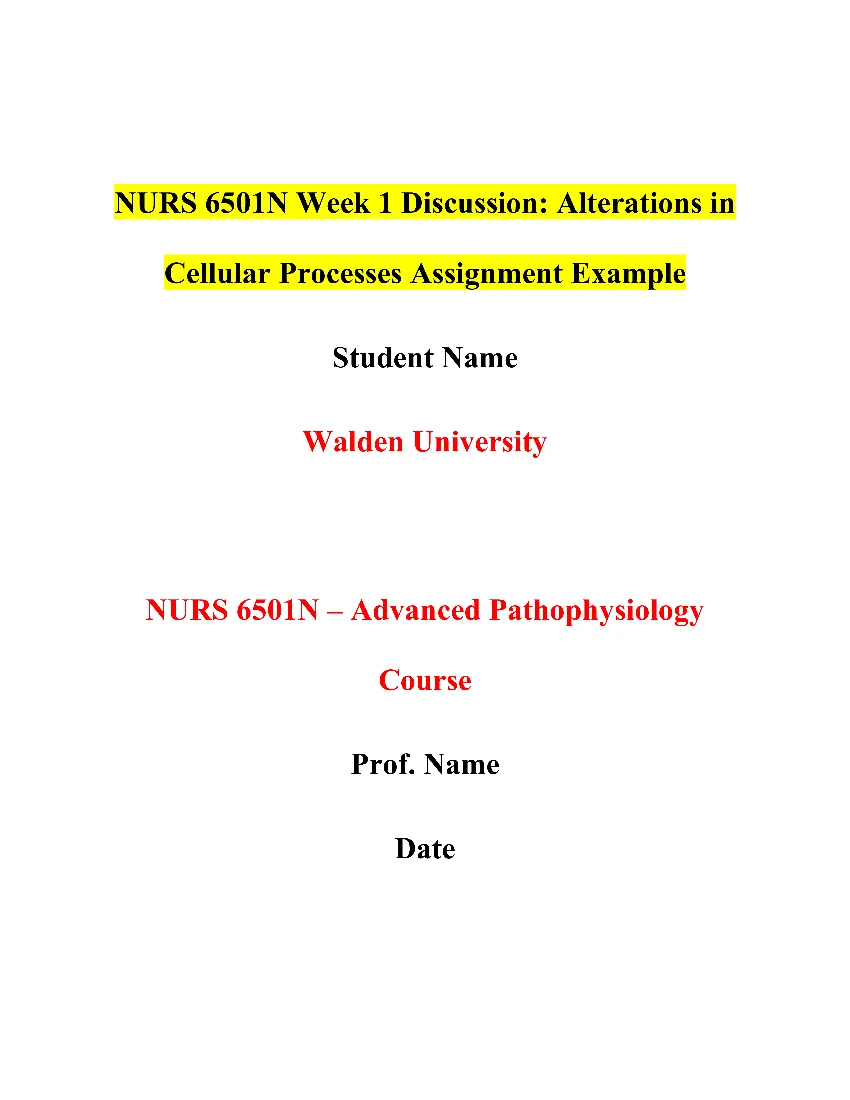 NURS 6501N Week 1 Discussion: Alterations in Cellular Processes Assignment
NURS 6501N Week 1 Discussion: Alterations in Cellular Processes Assignment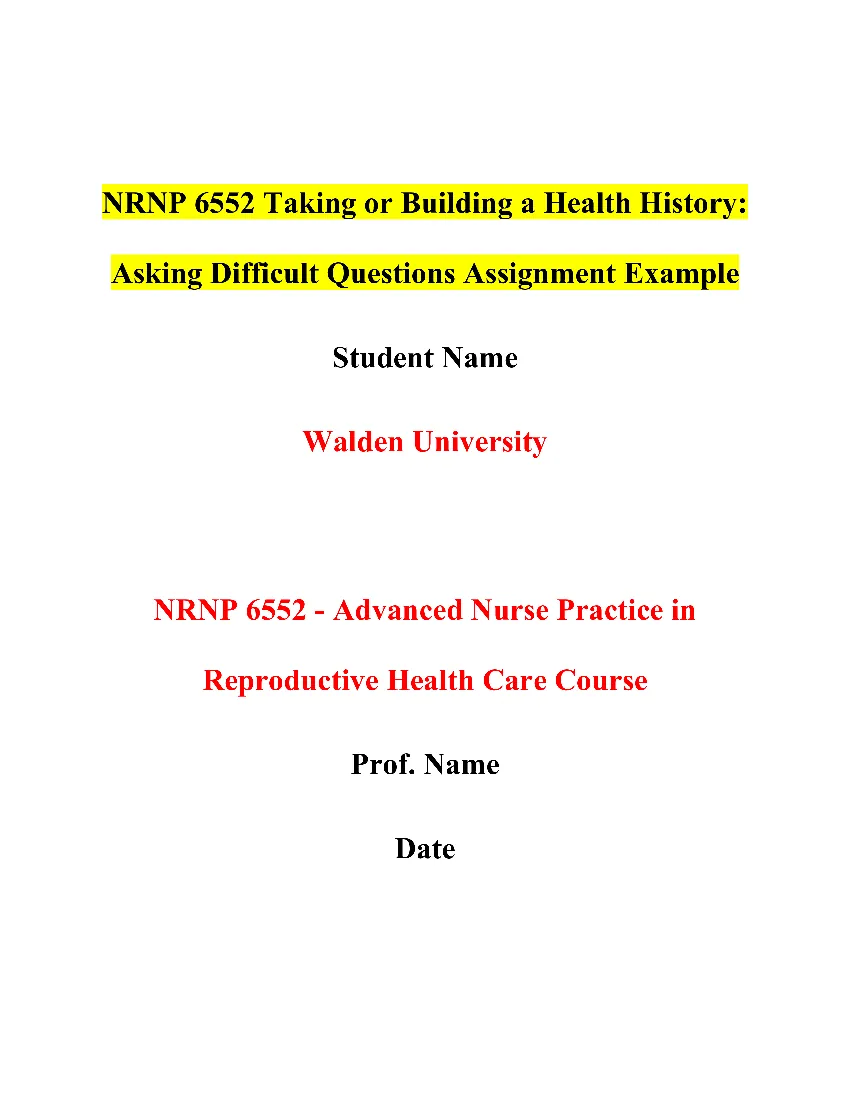 NRNP 6552 Taking or Building a Health History: Asking Difficult Questions Assignment
NRNP 6552 Taking or Building a Health History: Asking Difficult Questions Assignment